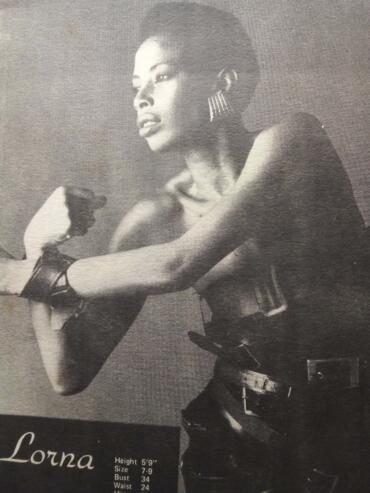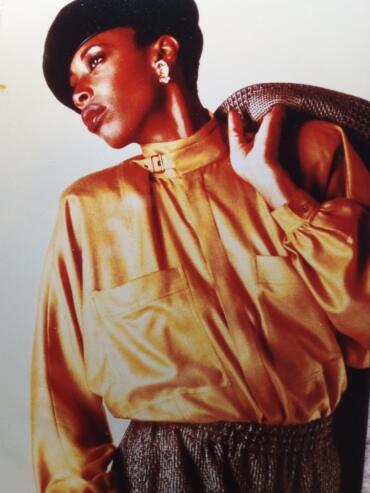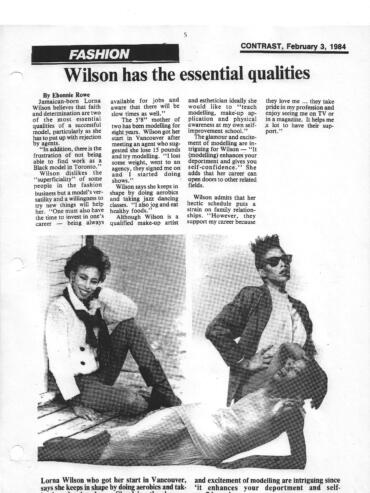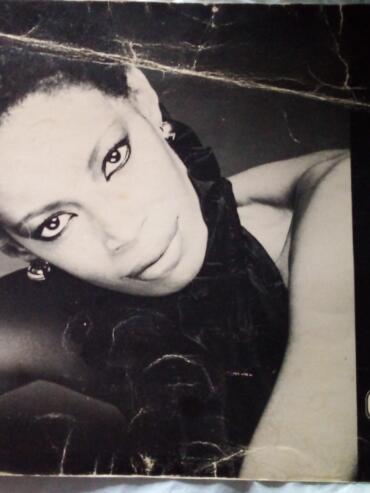June 2023
Month 20xx
Valeria Vasquez & Ayleen Karamat
Charmaine Gooden
Lorna Wilson had no plans to join the fashion industry, describing herself as a tomboy through and through, never into feminine or girly things. Her family compared her to her older sister, telling her she wasn’t as beautiful. So this tomboy never imagined she’d be strutting the catwalk or modelling for world-renowned brands, until one seemingly ordinary day, while walking down Vancouver’s Granville Street, her life changed forever.
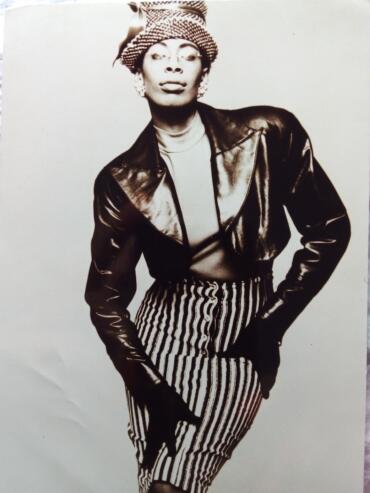

Early Life and Career
Born in Westmoreland, Jamaica, Wilson was the middle child of five. They were raised by their mother, Ceceile Whitter, a nurse, and their father, Lester Morgan, who first worked for the post office in the UK and Canada, then in telecommunications in the U.S.
The family moved around a lot when she was a child. From Jamaica, they emigrated to London in the ‘50s, living in Tooting; in 1967 they moved to Winnipeg, Manitoba.
They sailed on the Alexander Pushkin, where Wilson celebrated her 13th birthday, entering Canada via Montreal. After spending an exciting week at Expo 67, they travelled by train to Winnipeg. When she started high school there were only four other Black students, one of them being her sister. She recalls how students told her she talked funny because of her English accent, and her response always, “No, I don’t, you do!” laughs Wilson.
She felt awkward, describing herself as an outsider.“We stayed for a few years, but because my parents found the extreme winters unbearable, we moved to New York,” she explains. Wilson, however, wanted to go back to Canada and in 1974, at 19, she moved to Vancouver.
On that now life-changing stroll on Granville Street, a California agent stopped her and gave her his card, suggesting she lose some weight and go to New York. At first she was shocked and uncertain, but decided to take a modelling course at the Patricia Stevens Model and Talent Agency to see if she’d like it. She laughs, remembering how silly she felt when they were taught to walk a catwalk. “We learned to walk with a pelvic tilt, as if we were squeezing a dime between our butt cheeks,” she recalls.
This special section creates a spread of 2 photos that will jut out into the side margin.


A Black photographer in New York told her to get lip minimizer surgery. These run-ins happened regularly, especially at castings.
After graduating she signed with Ramona Beauchamp Model and Talent Agency in Vancouver. Wilson recalls Beauchamp’s words to her. “Lorna, you know, you can be number one if you really want it,’ she recalls. Wilson was shocked, thinking about her big feet and everything else she thought was wrong with her. Despite all the doubts,”that was actually how and where I started,” explains Wilson.
It was during her time with Beauchamp that Wilson decided to move to the fashion capital of the world, New York, in 1976. Sometimes she’d be the only model booked and would worry about being good enough. She was young and didn’t yet appreciate her value and worth. “I never told anyone I was a model because you’d almost always be criticized and judged. So I’d say I was in fashion,” she admits. It took until her 40s before she appreciated who she is and what she does.
Breaking Barriers
Wilson moved back to Canada in 1981 and was inspired by the former Miss Toronto (1956) and model agency owner, Judy Welch. She had an exceptional eye for “interesting” faces, put editorial on a different level and really changed the industry. Toronto became an international hub for discovering editorial models who didn’t fall into the traditional Barbie doll look. Even if they were short and looked like any woman, Welch transformed them into something special. She influenced Wilson and many others.
Welch and Wilson worked closely together. “I did print, shows and events for top designers like Zapata, Gerald Franklin, Dean and Dan, the twins now known as Dsquared2 and others,” says Wilson. “It wasn’t long before Welch asked me to take a 13-year old student, Monica Schnarre under my wing,” she adds. Schnarre was the youngest model ever to win Ford Models Supermodels of the World. “That was one of my most memorable moments, giving back what I know and witnessing that unfold,” says Wilson proudly.
Before long Wilson was teaching runway and anything that involved movement, like photo posing, body angles and poise.
She felt accepted in the modelling industry, and considered everyone she worked with as family. She refers to Judy Welch as “Mother Nature.” Before Welch opened a separate location for the agency, it operated out of her house. “The door was always open,” says Wilson.“We were always welcome. It was a beautiful space.”
Wilson experienced micro aggression with some colleagues, sharing one incident. A Black photographer in New York told her to get lip minimizer surgery. These run-ins happened regularly, especially at castings. “Someone would say, ‘you should have your hair this way, or you should do this or that,’ and you didn’t know where or how you fit in,” adds Wilson.
In Milan, they’d inform the girls that there were “enough” Black models, or there were “too many” Black girls for the shows. But casting directors loved Black girls. Wilson says, “they would say, ’there’s something about a Black model on the runway, you move more freely and have such elegance and stature.’” So Black models did get runway work, but not print.
Influence and Legacy
Nowadays you can find Wilson at home, in her garden, tending to her dwarf fruit trees, or out bargain-hunting. Reflecting back on her modelling career, she acknowledges much of what she learned made her feel comfortable in her own skin, sharing, “I know who I am, not saying I’m great, but it’s okay to be me,” she says. “The world is filled with a wide range of people, each is unique, special and creative, even if they don’t know it.” This connects to her now being a hypnotherapist, which she thinks is meant to be.
“It’s an extension of when I was a model agency teacher, helping people become comfortable with themselves, bringing out their uniqueness,” Wilson explains. She’s also authored two books, “Healing the Fragmented Soul” about using a SHIFT technique to retrieve souls and “Healing Journeys Through Quantum Realities” about many types of inner self-exploration.
Before parting we asked one last question. “What advice would you give your younger self about the industry? “Find what you like and build on it,” she suggests. “Don’t try to fit in; that feeds you with negative thoughts about not fitting in.” she adds. “And find what makes you different and like it, because it’s your special gift to the world.”
Toronto became an international hub for discovering editorial models who didn’t fall into the traditional Barbie doll look. Even if they were short and looked like any woman, Welch transformed them into something special.
About the authors:
Over the years Prof. Gooden has built a multi-media career as an editor, writer, presenter, public relations consultant and special event manager, spokesperson, host, and educator. She...
Read MoreOver the years Prof. Gooden has built a multi-media career as an editor, writer, presenter, public relations consultant and special event manager, spokesperson, host, and educator. She...
Read MoreAbout the author:
Over the years Prof. Gooden has built a multi-media career as an editor, writer, presenter, public relations consultant and special event manager, spokesperson, host, and educator. She...
Read More


